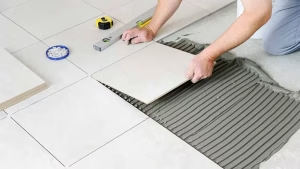
The 7 Hardwood Flooring Trends for 2025
Hardwood floors bring classic beauty with new styles. In 2025, focus is on natural looks, eco-friendly options, and bold designs to enhance any room. Here are the top hardwood flooring trends for homes this year:
1. Natural Matte Finishes
Glossy is out — matte is in. People choose low-shine, natural oil finishes to show off the wood’s real beauty and a modern style. These finishes also hide small marks and dust, making them stylish and useful.

2. Wide and Extra-Long Planks
Wide planks, especially extra-long ones, are popular in 2025. They make rooms look bigger and highlight the wood’s natural patterns. This style gives a clean, luxurious look that fits well in open spaces.

3. Dark Walnut and Warm Neutral Tones
Deep colors like walnut and chocolate brown are back, mixed with warm neutrals like honey and beige. These colors create a cozy and classy feel and match modern and rustic home styles.
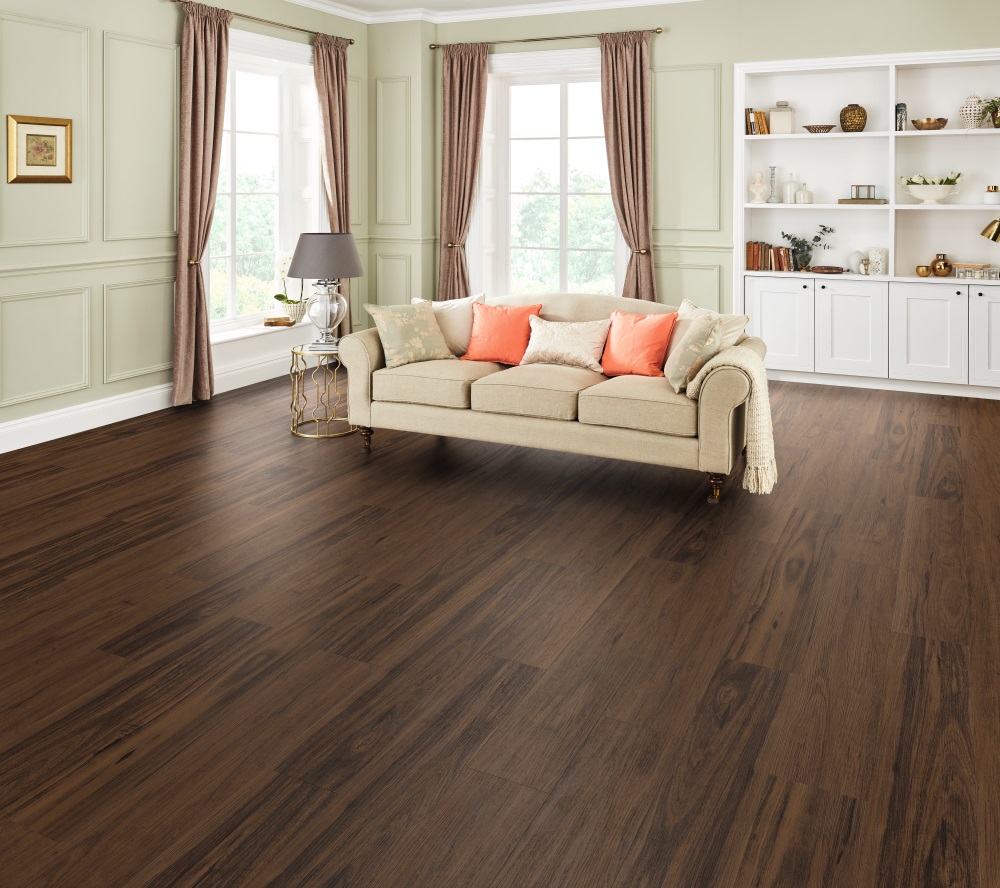
4. Wire-Brushed and Textured Surfaces
Texture is popular with wire-brushed, hand-scraped, and worn finishes adding depth. These surfaces make floors visually interesting and help hide wear, perfect for busy homes.
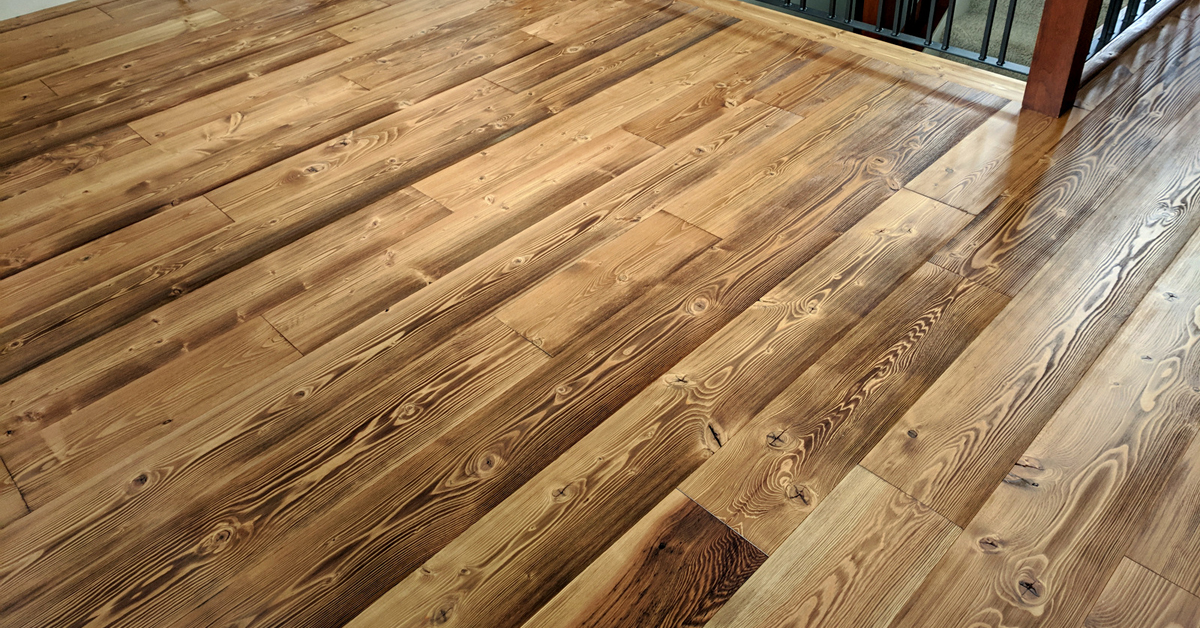
5. Sustainable and Reclaimed Wood
Eco-friendly floors are trending, with people choosing FSC-certified and reclaimed wood. These floors have unique looks and history, promoting good forest care.
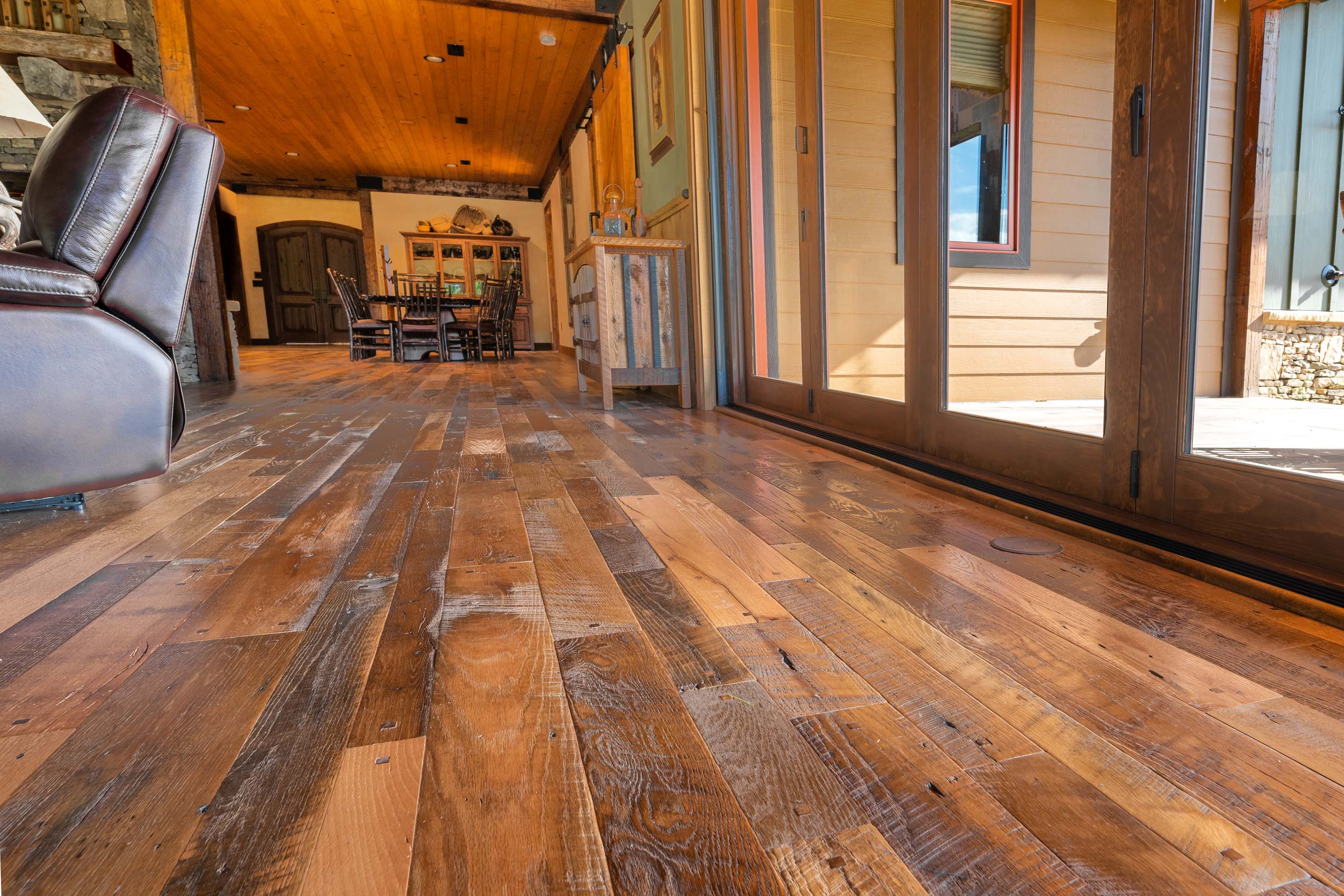
6. Mixed-Width Installations
Designers use different plank widths in one installation for a custom, natural look. This style breaks up monotony and adds movement, ideal for modern-rustic designs.

7. Parquet and Herringbone Layouts
Classic layouts like herringbone and chevron are back in style. These patterns add elegance to entryways, dining rooms, and bedrooms, mixing classic and modern styles.

Hardwood Colors, Grains & Finishes to Watch
In 2025, hardwood floors show off natural beauty with style. The focus is on real colors, soft finishes, and unique wood features that add depth and character to rooms.
Cool vs. Warm Tones
People are moving away from cool grays and choosing warm colors like honey, caramel, and chestnut. These shades make spaces feel cozy and welcoming, fitting with the trend of natural and eco-friendly design.
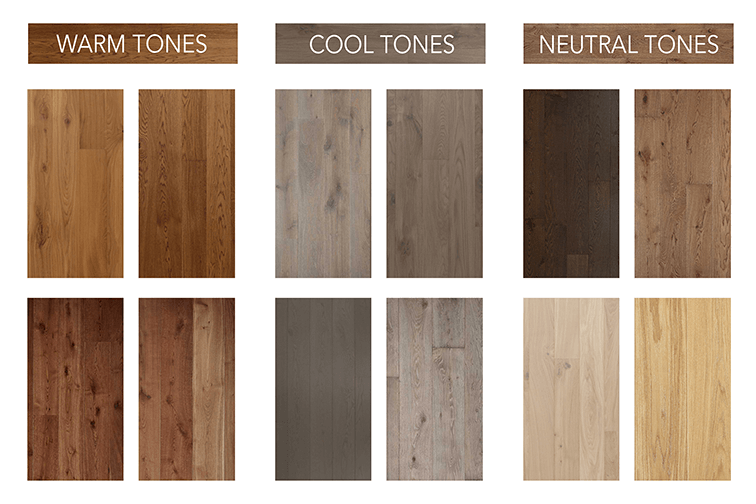
Low-Gloss, Natural Oil Finishes
Low-gloss finishes are popular because they show off the wood’s grain and give a modern, simple look. Natural oil finishes soak into the wood for strength and a soft, matte look that’s both stylish and useful.
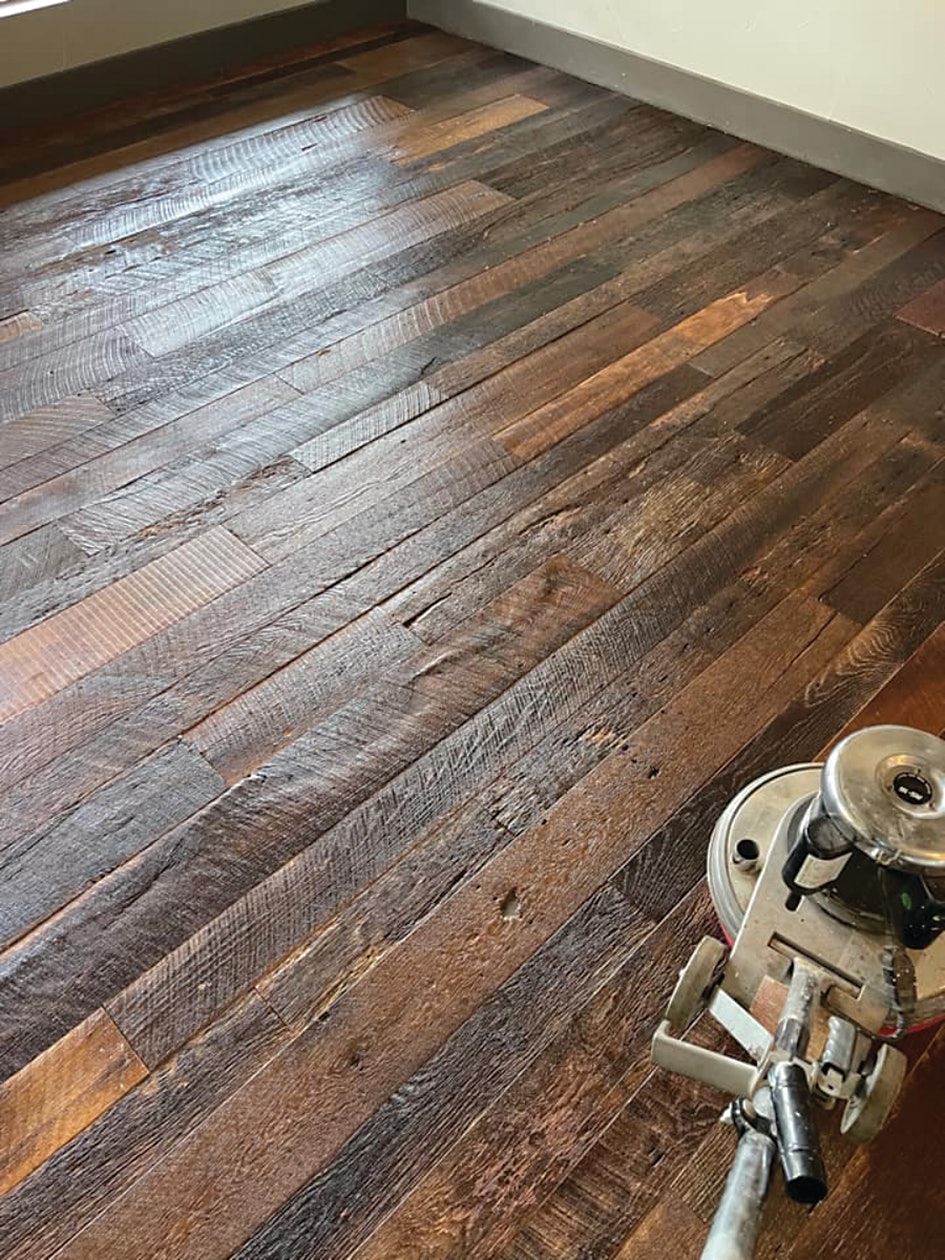
Unique Wood Species and Character Marks
More people like wood types with special grain patterns and natural marks. Hickory, for example, has colors from light tan to deep brown, adding character and rustic charm to any area.
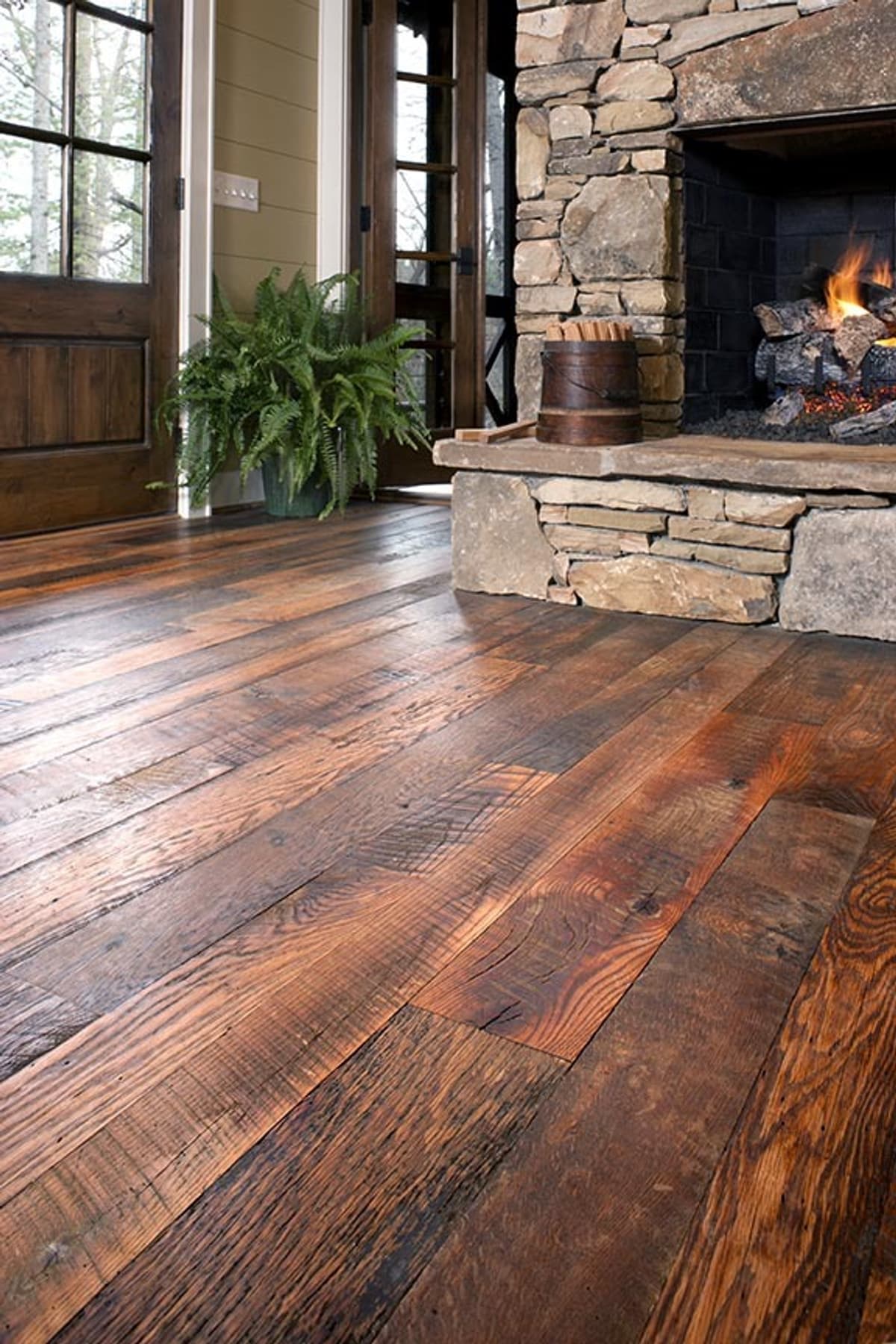
Best Hardwood Types by Room (Solid vs. Engineered)
Picking between solid and engineered hardwood depends on where you put it and what your home needs. Moisture, floors underneath, and how much people walk on it matter. Here’s how to choose the right hardwood for each room.
Kitchens and Basements: Is Engineered Wood Safer?
In areas with moisture like kitchens and basements, engineered hardwood works best. Its layers make it less likely to warp or swell compared to solid wood. Look for waterproof or water-resistant types to handle spills and small floods.
📌 Bonus Tip: Use click-lock floating floors in basements with concrete floors — no nails or glue needed.
Bedrooms and Living Rooms: Where Solid Wood Shines
In dry places like bedrooms and living rooms, solid hardwood is a great pick. It’s thick enough to sand and refinish many times, adding long-term value. The deep grain and real look of solid wood give a nice, natural feel.
Humidity and Temperature Fluctuations
In areas with changing seasons, engineered hardwood is more stable. It doesn’t expand or contract as much as solid wood, making it a good choice for places with big windows, entryways, or heated floors.
Quick Comparison Table: Solid vs. Engineered Hardwood by Room
| Room | Recommended Type | Why? |
|---|---|---|
| Kitchen | Engineered | Better with moisture; stable on floors |
| Basement | Engineered (floating) | Handles humidity; easy on concrete |
| Bedroom | Solid or Engineered | Both work; solid can be refinished more |
| Living Room | Solid or Engineered | Solid looks nice; engineered is flexible |
| Entryway or Mudroom | Engineered | Good with temperature changes and wet shoes |
Why Homeowners Are Choosing Hardwood in 2025
In 2025, hardwood floors are becoming popular again, not just for their appearance. People want floors that last, are eco-friendly, and connect to nature. Here’s why many homeowners are picking hardwood.
Eco-Friendly Choices
People care more about the environment now, and it shows in their flooring choices. Many choose FSC-certified wood, reclaimed planks, and low-VOC finishes for better air quality. These green options provide peace of mind and help the planet.
👉 Learn more about FSC-certified hardwood
Lasting Value
Hardwood floors are a great investment for your home. Unlike trendy surfaces that might go out of style, real wood is liked by many buyers. It increases property value and can help sell homes faster and at higher prices.
Comfort Underfoot
Hardwood feels nice to walk on. It’s warmer and softer than tile or stone, especially with area rugs. Engineered hardwood works well with radiant heating, making it cozy in cold weather.
Personalization and Luxury
With many wood types, finishes, and designs to choose from, hardwood allows for great customization. Whether you want a rustic or modern look, hardwood adds a high-end touch to any room.
Hardwood Flooring Cost Breakdown (2025 Estimates)
When you choose hardwood flooring, think about more than just the initial costs. Installation, type of wood, and upkeep all affect the total price. Here’s what to expect in 2025.
Cost per Square Foot by Wood Type
Different woods cost differently based on how common, hard, and nice they look. Here’s the cost for materials:
| Wood Type | Avg. Cost (per sq ft) | Notes |
|---|---|---|
| Red/White Oak | $5 – $8 | Strong, easy to find, classic look |
| Maple | $6 – $10 | Smooth, modern style |
| Hickory | $7 – $11 | Rustic, varied colors |
| Walnut | $10 – $15 | Dark, luxury feel |
| Reclaimed Wood | $10 – $18 | Eco-friendly, unique |
| Exotic (Teak, Cherry) | $12 – $20 | Very strong, luxury |
👉 Want more details? See our full Hardwood Flooring Cost Guide
Installation Costs: Nail-Down vs. Floating vs. Glue
Labor costs change a lot based on the installation method. Here’s a quick look:
| Installation Type | Avg. Labor Cost (per sq ft) | Best For |
|---|---|---|
| Nail-Down | $4 – $8 | Solid wood, very durable |
| Floating (Click-Lock) | $3 – $6 | Easy for DIY, over concrete |
| Glue-Down | $4 – $7 | Good for wet areas |
Extra costs might be added for underlayment, removing old floors, or prepping the subfloor.
Long-Term Value and Refinishing
Hardwood lasts a long time and can be a good investment. Solid wood can be refinished 3–5 times, making it last for many years. Engineered wood with a thick top layer can be refinished once, which balances cost and durability.
DIY vs. Professional Hardwood Installation: What to Know
Putting in hardwood floors can be a great experience or a costly error. Whether you do it yourself or hire someone depends on the floor type, your tools, and your subfloor’s condition. Here’s some info to help you choose.
DIY or Hire a Professional?
Doing it yourself works best with engineered click-lock planks. These sit on underlayment without nails or glue, making them a top pick for handy people. Solid hardwood needs careful cutting, nailing, and finishing — better for experts, especially on uneven or large areas.
👉 New to flooring? Check our Hardwood Flooring DIY Guide for detailed steps and prep lists.
Tools, Skill, and Subfloor Prep
Before you begin, consider these:
Do you have or plan to rent a flooring nailer, moisture meter, and saws?
Is your subfloor flat, dry, and solid?
Can you measure, cut, and lay patterns accurately?
Subfloor prep is crucial for a successful installation, especially for nail-down and glue-down methods that need smooth, clean, and dry surfaces.
When to Use Floating Engineered Planks
Floating engineered wood floors are perfect for:
Basements and concrete slabs (no nails needed)
Multi-level homes needing noise control
Quick updates with few tools
These floors fit together like puzzles and “float” over underlayment, making them a good project for intermediate DIYers on a weekend.
Solid Wood Mistakes to Avoid
Solid hardwood is tricky. Common DIY mistakes include:
Not letting planks adjust before installing (causing warping)
Skipping moisture checks on subfloors
Nailing too close to edges, causing splits
Not leaving space for expansion around the edges
If you’re not sure, hiring a pro can save your floor and warranty.
Final Considerations Before Choosing Hardwood Flooring
Before you commit to a hardwood floor, it’s important to zoom out and look at the big picture. The right choice balances beauty, function, and longevity — and it’s shaped by the realities of your space, your lifestyle, and your design vision. Here are the top factors to weigh before making your final decision.
Solid vs. Engineered Hardwood
Solid hardwood flooring offers unmatched authenticity and the ability to refinish multiple times — ideal for long-term homes and higher resale value. Engineered hardwood, on the other hand, offers greater flexibility in installation (especially over concrete or radiant heat) and better moisture resistance. Your choice should match both your floor plan and your future plans.
Moisture Tolerance and Room Suitability
Not all hardwood belongs in every room. Engineered hardwood is better for moisture-prone spaces like kitchens, basements, or entryways. Solid hardwood is better suited for dry, stable environments like bedrooms and formal living areas. Always consider humidity levels and potential water exposure before deciding.
Scratches, Dents, and Wear Resistance
Homes with pets, kids, or high traffic need tougher finishes and harder wood species. Hickory and maple are great for durability, while softer woods like pine may dent more easily. Wire-brushed or hand-scraped finishes can also help camouflage wear over time.
For additional high-wear zones like staircases, consider our hardwood stairs offerings — designed for both function and elegance.
Refinishing Potential and Long-Term Value
Solid hardwood wins on longevity — most can be sanded and refinished several times, refreshing the look without full replacement. Hardwood refinishing services can extend the life of both solid and some engineered floors. If you plan to stay in your home for the long haul, refinishing potential can significantly impact lifetime cost.
Design Harmony with Walls, Furniture, and Lighting
Think beyond the floor — hardwood plays a major role in your interior design. Consider undertones that complement your wall colors, furniture styles, and natural light exposure. Cooler tones may suit modern or coastal styles, while warm woods enhance rustic, traditional, or Scandinavian-inspired spaces.
Need more guidance? Explore all of our hardwood flooring options to find a style that perfectly fits your space.
Need Help Choosing or Installing Your Hardwood Flooring?
Now that you’ve explored the top hardwood flooring trends for 2025 — from wood types and finishes to layout ideas and cost considerations — you’re one step closer to transforming your space with the warmth and elegance of real wood floors. But if you’d rather skip the guesswork, subfloor prep, and precise cuts, we’ve got you covered.
Our experienced team handles everything — from on-site moisture testing and custom layout planning to the expert installation of solid and engineered hardwood, hardwood stairs, and refinishing services that restore older floors to like-new condition.
We’ll also help you select the right hardwood style and format for your home’s lighting, color scheme, and long-term needs — whether you’re remodeling a cozy bedroom, a high-traffic entryway, or an open-concept living area.
Click here to contact us today and schedule your free in-home consultation to see if we serve your area!

